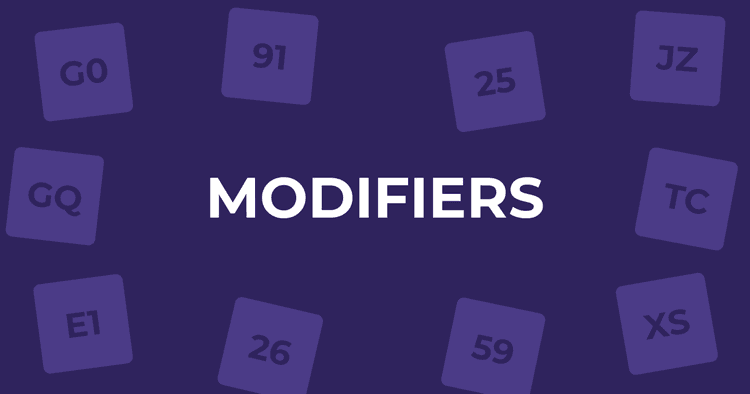Insurance Credentialing: Comprehensive Guide for Healthcare Providers [2024]
![Insurance Credentialing: Comprehensive Guide for Healthcare Providers [2024]](/_next/image?url=https%3A%2F%2Fluminous-respect-c34fb1b082.media.strapiapp.com%2Finsurance_credentialing_5e52a42b8c.png&w=3840&q=75)
Insurance credentialing is a critical step for healthcare providers seeking reimbursement from insurance companies. This comprehensive guide will walk you through the credentialing process, required documentation, key timelines, and best practices to ensure a smooth enrollment process.
What is Insurance Credentialing?
Insurance credentialing, also referred to as provider enrollment, is a two-phase process that allows healthcare providers to participate in insurance networks and receive reimbursements for services rendered.
Phase 1: Credentialing
- Application submission and verification: Submit your credentials to insurance companies for review.
- Insurance companies conduct Primary Source Verification (PSV) to confirm your qualifications.
- The Credentialing Committee reviews and approves your application.
Timeline: Typically takes up to 90 days, though this can vary based on the insurer and completeness of the submission.
Phase 2: Contracting
- Review and negotiation of provider contract terms.
- Discussion of reimbursement rates and finalization of participation requirements.
- Once finalized, you are assigned a provider number and an effective start date.
Timeline: Usually takes an additional 30-45 days after credentialing approval.
Understanding Key Timelines
Insurance credentialing timelines can vary depending on the payer and the completeness of your application. Below are the standard timeframes:
Standard Processing Times:
- Commercial Insurance Credentialing: Up to 90 days
- Contracting Phase: Additional 30-45 days
- Medicare/Medicaid Processing: 40-60 days
- CAQH Profile Setup: Several hours for initial setup
Important Deadlines:
- Claims submission windows vary by payer, typically 30-90 days after service.
- CAQH re-attestation is required every 120 days to maintain current information (every 180 days for providers in Illinois).
- Medicare retroactive billing is limited, while most commercial insurance plans do not allow retroactive billing.
Required Documentation for Insurance Credentialing
To ensure your application is processed efficiently, you’ll need to gather a variety of personal, professional, and practice-related documents.
General Credentialing Documentation for Healthcare Providers
For healthcare providers undergoing the credentialing process, certain core documents are universally required to verify personal identity, professional qualifications, and standing. These documents verify your personal identity, qualifications, and professional standing.
Personal Information:
- Contact details (email address, phone, address, etc.)
- Government-issued identification (e.g., driver’s license)
- Social Security card
- Recent photograph (signed and dated)
- Citizenship or visa status (if applicable)
Identification Numbers:
- National Provider Identifier (NPI#) and confirmation documentation
- Federal Tax ID number (EIN)
- Medicaid and Medicare numbers (if applicable)
Licenses and Certifications:
- State medical or professional licenses (wallet card and wall certificate)
- Federal DEA and state-controlled substance registrations
- Proof of malpractice insurance coverage
- Relevant certifications (e.g., board certification, specialty certificates)
Educational Background:
- Diplomas and training certificates (medical school, residency, fellowship, or graduate school for PAs/APRNs)
- Continuing Medical Education (CME) credits from the past few years
- Certification exam results (e.g., USMLE, NBME, or equivalents for other roles)
Work History and Professional Information:
- Complete CV/resume with no gaps, using Month/Year format for all dates
- Detailed malpractice claims history (if applicable)
- Hospital privileges documentation
- Surgical logs (if applicable)
- Case logs from recent years (typically the last 24 months)
Additional Credentialing Documentation for Physicians
Physicians often need to submit extra documentation to demonstrate their experience, professional standing, and qualifications for specific clinical roles.
Key Documents for Physicians:
- Board certification documents, with details of certification and recertification
- Hospital privileges documentation, along with a completed Delineation of Privileges Form
- Surgical or procedure logs (if relevant to your specialty)
- Documentation of professional liability insurance (if required)
- Three recent letters of recommendation from peers who have directly observed your clinical skills
Special Situations:
- Military service: Veterans may need to submit their military discharge record (Form DD-214)
- Foreign medical graduates: An ECFMG certificate and documentation of any Fifth Pathway program participation
Additional Credentialing Documentation for PAs and APRNs
For physician assistants (PAs) and advanced practice registered nurses (APRNs), credentialing requirements are slightly different, though many of the core documents remain the same.
Key Documents for PAs and APRNs:
- Copies of all active state licenses and certifications
- Federal DEA registration and any state-controlled substance licenses
- Diploma and transcripts from accredited training programs
- Letters of recommendation from clinical peers or supervisors
Additional Documentation:
- Immunization records and recent TB test results (where applicable)
- Completed Delineation of Privileges Form (if relevant to your practice)
- Evidence of Continuing Medical Education (CME) for the past three years
CAQH Provider Data Portal Essentials
Most commercial insurers use CAQH Provider Data Portal for provider credentialing. Here are some key points to keep in mind:
- Self-Registration: Providers can start the credentialing process by self-registering at CAQH Provider Data Portal.
- Complete the Profile: Providers need to fill out all sections of their profile, including personal details, education, work history, licenses, and practice locations.
- Authorize Organizations: Once the profile is completed, providers must authorize participating organizations (insurance companies, hospitals, etc.) to access their data for credentialing.
- Attestation: After completing or updating the profile, providers must attest that the information is accurate. Re-attestation is required every 120 days (or 180 days for providers in Illinois) to ensure information remains up-to-date.
- Supporting Documentation: Providers need to upload necessary supporting documents like licenses, insurance, and certifications directly into the portal.
- CAQH Profile Setup Timeline: Setting up a profile on CAQH can take several hours initially, but the time required varies depending on the complexity of your work history, education, and practice locations.
Common Challenges and Solutions
Application Issues:
- Incomplete employment history
- Missing documentation
- Incorrect date formatting
- Expired credentials
- Signature omissions
Solution: Double-check your application for completeness, ensure all documents are current, and follow the specific formatting guidelines for each section.
When Insurance Panels are "Closed":
If insurance panels are closed to new providers, you can improve your chances by highlighting unique qualifications such as:
- Specialized services
- Extended office hours
- Multilingual services
- Focus on underserved populations
Medicare and Medicaid Enrollment
Enrollment in government programs like Medicare and Medicaid comes with specific requirements that differ from commercial insurance.
Medicare Requirements:
- Operational service location
- Electronic funds transfer (EFT) setup
- Complete ownership documentation
- Citizenship verification (if applicable)
- Additional documentation for foreign-educated providers
Key Differences:
- Standardized enrollment forms are used across jurisdictions.
- Specific intermediaries handle processing based on your location.
- Distinct verification requirements make the process more rigorous than commercial insurance credentialing.
Best Practices for Insurance Credentialing Success
To streamline the insurance credentialing process and avoid common pitfalls, follow these best practices:
Organization:
- Create a credentialing calendar to track key deadlines.
- Maintain up-to-date documentation files.
- Keep electronic copies of all submissions.
- Track all communication with insurers, including dates and points of contact.
Follow-Up Protocol:
- Check the status of your application every two weeks.
- Document all communications with insurance companies.
- Respond promptly to any requests for additional information.
- Monitor CAQH re-attestation deadlines to avoid lapses in credentialing.
When to Consider Professional Help
Credentialing can be a time-consuming and complex process. You may want to consider professional assistance in the following situations:
- Starting a new practice
- Managing multiple applications for different insurance panels
- Experiencing repeated delays or denials
- Handling complex enrollments or government program applications
- Lacking internal resources to manage the credentialing process
Financial Considerations: Potential Impacts of Credentialing Delays
Delays in insurance credentialing can lead to significant financial repercussions:
- Inability to bill insurance companies for services.
- Extended payment waiting periods due to credentialing delays.
- Cash flow interruptions, which can affect daily operations.
- Lost revenue from non-billable services during the credentialing process.
Helpful Links for Insurance Credentialing
- Council for Affordable Quality Healthcare (CAQH) Provider Data Portal: Learn more about CAQH Provider Data Portal (formerly known as CAQH ProView) and how it simplifies provider credentialing
- National Provider Identifier (NPI) Application: Apply for or update your NPI with the National Plan and Provider Enumeration System (NPPES)
- Medicare Provider Enrollment, Chain, and Ownership System (PECOS): Complete your Medicare enrollment using PECOS
- Centers for Medicare & Medicaid Services (CMS) Provider Resources: Get detailed information on Medicare and Medicaid credentialing requirements
- American Medical Association (AMA) Credentialing Guidelines: Access credentialing resources and guidelines from the AMA
- Federation of State Medical Boards (FSMB): Find information on state licensure, credentialing, and disciplinary actions
- National Association of Credentialing Specialists (NACS): Learn more about professional credentialing services and specialists
- Provider Enrollment for Medicaid (State-Specific): Access your state's Medicaid provider enrollment portal for state-specific requirements
Conclusion
Successful insurance credentialing requires attention to detail, consistent follow-up, and organized documentation. While the process can be complex, understanding the requirements and maintaining systematic procedures will help ensure your practice can effectively participate in insurance networks and receive timely reimbursements.
Start the credentialing process early, stay organized, and maintain regular communication with insurance companies throughout the process. Keep in mind that requirements and timelines may vary by payer and state, so it’s crucial to verify specific guidelines with each insurance company.
For more information on insurance credentialing, contact your target insurance companies directly or consult with your medical billing partner or a credentialing specialist to help guide you through the process.
Considering a new medical billing company?
Explore our top medical billing companies marketplace.

